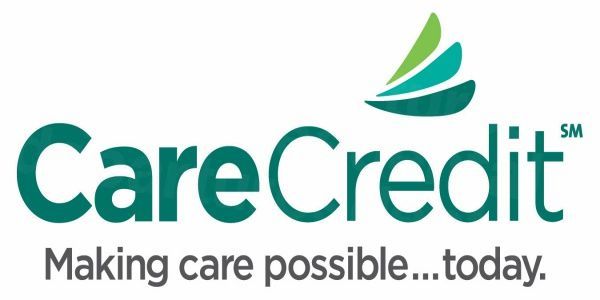Most people would love to have a better smile, but the truth is that not everyone can afford it. The rising problem of obtaining affordable dental work perplexes millions of Americans who either do not have dental insurance, or their insurance coverage is far short of what it needs to be to adequately pay for their treatment.
The problem becomes even worse for high-value dental work, especially teeth replacement options like the All-on-4® treatment concept, which is provided by Nobel Biocare.
But take heart! You have a number of options for saving money and maximizing your chances of obtaining more affordable treatment without compromising on quality.
Get started by looking through our full list of global providers of the All-on-4® treatment concept.
How Can Dental Implants Help?
Dental implants are a permanent replacement for missing teeth. They’ve been around for decades, and are now increasingly common for people who don’t want the hassle of dentures, or to compromise the structure of healthy teeth in order to replace their missing tooth with a crown and bridge.
Traditional Dental Implants:
Essentially, dental implants consist of three parts—the implant, the abutment and the crown, which together provide a secure, stable and natural-looking replacement for a missing tooth. The implant is placed directly into the jaw bone, like a tooth root, then left for several months to fuse with the jaw bone. This forms a solid base for the abutment to be attached to the implant. After the required amount of time has elapsed, the gum is opened up to expose the implant, and the abutment attached. The gum is then placed back over the implant and your crown (false tooth) attached to complete the procedure.
You will have little downtime for the placement of the implant apart from some slight swelling and/or bruising, and no downtime at all after the abutment and crown are attached.
Traditional implants are typically used to replace single teeth, although dental bridges may be used with two or more implants to replace three teeth, or more. While this method can be used to replace all your teeth in one jaw, even with low-cost dental implants it will prove to be very expensive—and time-consuming. And it’s a minimum of four months between the implant placement and the crown attachment, requiring a return trip to your implantologist.
Another problem with implants is they aren’t suitable for everybody. A patient with significant bone loss may have to consider a bone graft or sinus lift prior to the implant procedure.
However, the convenience and confidence of having a natural-looking tooth that can last a lifetime if cared for properly far outweighs any of the downsides in terms of cost and length of the procedure.
All-on-4® treatment concept:
Over the past couple of decades, dental researchers and specialists have developed and perfected a new technique for improving the implant process—the innovative All-on-4® treatment concept.
Pioneered in Europe by Dr Paulo Malo, this full-arch restoration technique is now a common procedure in specialist dental clinics throughout the world.
The procedure replaces all the teeth in either the upper or lower jaw using just four dental implants. The implants are placed at strategic points in the mouth with the two rear implants inserted at 45-degree angles rather than the 90-degree angle of traditional implants. This tilt strengthens bone-to-implant contact, as well as improving anchorage and load distribution across the jaw bone.
In effect, the implants are strong enough to hold an arch (fixed bridge) of 12 teeth without any fear of them moving or slipping, as with dentures.
Unlike traditional implants, the procedure doesn’t require much in the way of downtime. While you may notice some slight swelling and bruising, most people don’t experience any significant after-effects.
Another positive about this procedure is that tooth extraction, insertion of implants and attachment of teeth can all take place in the same session and, unlike traditional implants, patients who do have some bone loss may still be suitable without having to have a bone graft.
Prices:
Traditional implants in the United States cost an average of around $3,900 each, whereas an implant-based full-arch replacement costs upwards of $23,000.
Obviously, to replace a full row of teeth, a fixed bridge is a more affordable option than using individual implants, but it’s still a great deal of money—out of reach for many.
Tips for Saving Money on Dental Care
Below, we’ve listed some of the commonest ways you can get discount dental work, or at least ways to spread the costs to make your dental care more affordable.
#1 Dental Insurance

Ideally, a dental insurance plan would be most people’s preferred method of paying for their dental care. Obviously, the good thing about insurance is that by paying into a plan your insurance should cover most of your dental costs when you need treatment. Increasingly, however, fewer and fewer procedures are covered, and plan holders requiring complex dental work are faced with huge out-of-pocket expenses, once all the deductibles, caps, exclusions and other “gotchas” are fed into the mix
Another downside of dental insurance is that it does not cover cosmetic procedures. And wouldn’t you know it - dental implants, including the All-on-4® treatment concept, are considered cosmetic, mainly because there are other (cheaper but far less desirable) tooth replacement options around which your insurance might cover, such as dentures or crowns.
#2 Dental Financing

A personal loan is another option for getting the treatment you need, particularly if you need to fund a larger purchase. However, although your dental finance may have a lower interest rate than other types of finance it’s worth bearing in mind that for expensive procedures, the monthly payments are still likely to be equivalent to a small mortgage!
You should definitely shop around to get the best interest rates as this can make quite a difference to your monthly payments.
#3 Government Dental Programs

Military members need not worry about health insurance for themselves or their families while they are serving. However, once they are on civvy street it’s something they need to consider.
If you’re ex-military then you may find dental healthcare coverage plans available to you and your family. The options vary depending on how long you served, where and when, your discharge, whether you were on active duty and other factors. It’s worth looking into, as some treatments are completely free, and many others are discounted as much as 50%, even for dental implants.
#4 Travelling Abroad for Dental Treatments

Increasingly dental patients are choosing to travel for more affordable treatment in another country, or combine dental care with a holiday. You can certainly get much more affordable prices in locations like Mexico, Costa Rica or even Thailand, where the average price is around $8,000—almost two-thirds lower than in the United States or Canada.
“Dental tourism” has become a thing, with more than a million North Americans crossing borders every year for some type of oral health treatment.
Even for low-cost procedures, like fillings, most dental travelers see savings of around two-thirds. So, if you’ve neglected to do so at home, it’s well worth checking out a good-quality dentist even for a check-up and routine maintenance.
#5 Dental Savings Plans

Also known as dental discount plans, these are an alternative to dental insurance. Dental savings plans offer between 10% and 60% off dental care with a nationwide network of dentists who have agreed to provide the discounted rates to savings plan members.
Plans include discounts on the type of care you require, including preventive care, restorative care, cosmetic treatments and even specialist care, including dental implants.
#6 CareCredit

CareCredit is essentially a credit card for dental financing, with over 200,000 member providers across the USA. Once you’ve applied you can use it at any dental clinic that accepts CareCredit. You are offered short-term financing options where no interest is payable on purchases up to $200, and other interest options for larger purchases with up to 60 months to pay off the loan.
It’s worth bearing in mind this could be an expensive option if your treatment is several thousand dollars and you choose to pay it off over 60 months, as much of the payback will be consumed with interest. Carefully research rates and other terms to determine if CareCredit is right for you.
#7 0% APR Credit Card

Most of the larger banks offer credit cards, or periodic offers on your present credit card, that allows you to pay no interest for a specified time (usually 12 months). This may be a better option for your dental financing.
Although the 0% introductory rates won’t be for 60 months, many offer deals of up to 24 months, which will save you a bundle in interest payments if you can pay off the loan within the introductory offer period Caution: banks are betting you won’t pay off the bill in time, and stiff penalties and interest rates can apply.
#8 Dental Schools

Dental schools in colleges and universities around the country—from Florida to Washington—could be a good way of obtaining discount dental work. Dental students need to gain experience by treating real patients, while experienced, fully-licensed dentists closely monitor the students. Likewise, the American Dental Hygienists’ Association may also be worth contacting for preventive care, like scaling and polishing, from trainee dental hygienists.
Some handle complex work, such as full mouth restorations..
#9 Clinical Trials
The National Institutes of Dental and Craniofacial Research (NIDCR) are sometimes looking for volunteers to take part in research studies, called clinical trials. You will probably need to have specific dental, craniofacial or oral conditions to participate but if you qualify you may get low-cost or free dental care.
#10 Negotiate with Your Dentist
You will need to do some research before you attempt to negotiate on prices. Find out what others are charging in your area, which gives you some bargaining leverage. Ask your dentist for the billing code, or CPT (Current Procedural Terminology) so you’ll be able to compare.
Most of us don’t like talking about money, but it’s worth bringing it up. Ask for a discount if you’re paying in cash, or perhaps you can get a discount if you offer to pay the entire bill up-front.
There’s no shame in simply mentioning frankly to your dentist that you cannot afford the price; you may be pleasantly surprised at the response.
Some dentists will offer an interest-free payment plan over 12 months, which may be another way you can achieve dental care you can afford.
#11 Health Savings Accounts
![]()
An HSA (health savings account) is available to taxpayers in the United States who are enrolled in a high-deductible health plan (HDHP). The funds paid into the account are not susceptible to federal income tax and roll over year-to-year if they are not spent.
The Bottom Line
If you apply a bit of creativity, research and extra effort, you have options for shaving money off your exorbitant dental bills.
Connect with our Customer Care Team to set up a free appointment with no upfront charges.
Sources:
All-on-4® treatment concept. Nobel Biocare. Website accessed: 10 February 2021. https://www.nobelbiocare.com/en-us/all-on-4-treatment-concept
About Prof Paulo Malo. Nobel Biocare. Website accessed: 10 February 2021. https://www.nobelbiocare.com/ca/en/education/our-speakers/m-o/paulo-malo.html
Soto-Peñaloza, David & Zaragozí-Alonso, Regino & Penarrocha-Diago, MA & Penarrocha, Miguel. (2017). The all-on-four treatment concept: Systematic review. Journal of Clinical and Experimental Dentistry. 9. 10.4317/jced.53613. https://www.researchgate.net/publication/315370698_The_all-on-four_treatment_concept_Systematic_review
How Does Dental Insurance Work? Investopedia. Website accessed: 10 February 2021. https://www.investopedia.com/articles/personal-finance/111715/how-does-dental-insurance-work.asp
Recognized Dental Specialty Certifying Boards. National Commission on Recognition of Dental Specialties and Certifying Boards (American Dental Association). Website accessed: 10 February 2021. https://www.ada.org/en/ncrdscb/specialty-certifying-boards
